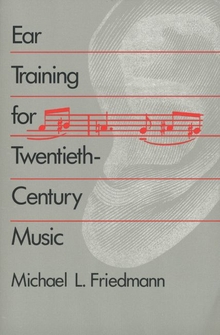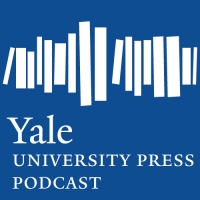Ear Training for Twentieth-Century Music
WARNING
You are viewing an older version of the Yalebooks website. Please visit out new website with more updated information and a better user experience: https://www.yalebooks.com
Michael L. Friedmann
How can the musician’s ear penetrate the complexities and theoretical abstractions of the twentieth-century music? This book offers a solution: it enables the student to perceive essential musical connections at the core of modern music by identifying and drilling the distinctive structures and processes of the twentieth century’s greatest composers.
Michael L. Friedmann has developed and successfully tested a method that combines theory and exercises to give students a deeper understanding of modern music. Using musical examples from the works of Debussy, Bartók, Choenberg, and Stravinsky, Friedmann begins with extensive work in sight-singing and dictation. The chapters that follow develop clear, multifaceted approaches to intervals and dyads, transposition and inversion, melodic contour, and three-and four-element set classes. In these chapters Friedmann offers students opportunities not just to identify the twelve trichord and twenty-nine tetrachord types, but to explore their structural possibilities. He also demonstrates the relation of these set classes to the diatonic, whole-tone, and octatonic scales. Finally, Friedmann introduces set classes of more than four elements, as well as twentieth-century modes. The book provides a wealth of musical excerpts including melodies composed by the author himself—to test analytic listening ability and to make the student with each set class.
"Michael Friedmann's exemplary and innovative textbook will undoubtedly have a very significant impact on the teaching of twentieth-century music. I regard it as a major contribution to the field of music-theoretical pedagogy."—Allen Forte, Yale University
"Challenging and vastly rewarding. The particularly original, inventive exercises on trichords and tetrachords will go far towards helping students make the music their own."—David Lewin, Harvard University
"Michael Friedmann's Ear Training for Twentieth-Century Music is a skills text in every sense of the word; using non-tonal materials, students are asked to improvise at the keyboard, sing at sight, take dictation, memorize melodies by rote, and identify selected set classes by eye and ear. Friedmann's sequence of presentation, lucid explanations of set-theoretical concepts, and appendices of well-chosen examples from the classics of twentieth-century literature make these skills goals entirely attainable."—Elizabeth West Marvin, Eastman School of Music, University of Rochester
"Systematic and imaginative, Ear Training for Twentieth-Century Music will provide a worthwhile challenge for the serious music student."—Gary Wittlich, Professor of Music Theory, Indiana University
"At last! A basic but far-reaching text for teaching Twentieth Century ear training that is commensurate with sophisticated accounts of post-tonal music. Students and instructors of theory, analysis and composition will benefit from this first-class introduction to hearing pitch-class relations in new music."—Robert Morris, Eastman School of Music, University of Rochester
"This is a valuable book. Its primary purpose of developing ear-training is well served by a lucid writing style and by careful attention to intricate details. Equally significant, however, is the comprehensive explanation of set theory contained in the book. . . . I strongly recommend this book for use in college and university classes, whether the emphasis be ear training or analysis. . . . The book is a unique contribution to the literature, and its presence is welcome."—G. Larry Whatley, American Music Teacher
"A course of intellectual analyses and practical exercises, each complementing the other. . . . There is no doubt that the book will help advanced students of music to sharpen up their analysis of pitches, intervals and chords in that part of the twentieth century repertoire which depends heavily on exact pitches and durations of notes. It will, too, develop a memory for these two elements within a time continuum."—George Pratt, British Journal of Music
“A superb contribution to a seriously neglected area of musical study. It has the potential, particularly in view of the clarity and sensitivity of the author’s writing style, to revolutionize the approach to teaching both twentieth-century music in general and twentieth-century music ear training in particular.”—Deborah Stein, New England Conservatory of Music
Winner of the 1992 Special Citation Award given by The Society for Music Theory
ISBN: 9780300045376
Publication Date: August 29, 1990
Publication Date: August 29, 1990
238 pages, x


